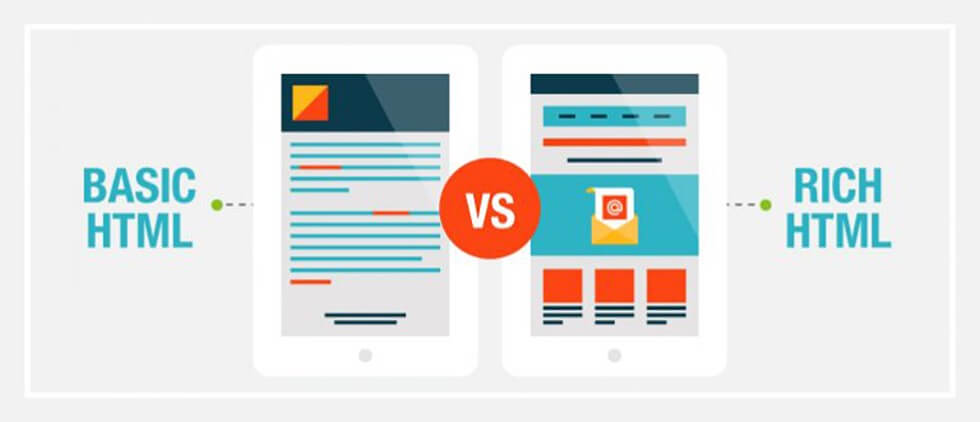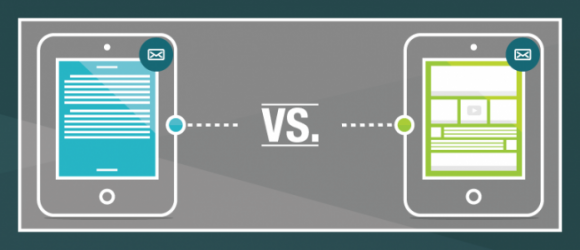Basic HTML vs. Rich HTML: Which E-mail Format Works Best?

Just over a year ago, I wrote a blog post about a series of studies that showed plain text emails outperform HTML emails in most instances. The main reason? Filtering services that flag HTML emails as SPAM.
However, not all HTML emails are created equal. As my previous post mentioned, basic HTML emails perform differently than rich HTML emails. But how differently? A recent blog article by chamaileon sheds some new light on the gray area of HTML email performance.
Basic HTML emails use basic text formatting but HTML to add simple elements, like headlines and clickable links, to make the email more easily scannable. Rich HTML emails include images, clickable links and buttons, graphics and other visually appealing design elements. They both have their advantages, but which one pulls the best?
According to a study done by Prolmpact 7, which presented the same email content in both a basic and rich HTML format, the basic HTML version increased click-through rates by 194.51%.
And in a similar study conducted by HubSpot, the more HTML-rich an email was, the lower the open rate.
The reason for basic HTML’s success rate? Same as before: filtering services blocked HTML-rich emails.
Of course, as my previous blog post noted, there is a time and place for all three types of email formats. Plain text emails still work best for personalized, one-on-one communications and HTML-rich emails best support retail marketing messages. But in most cases, you’re best bet is to stick with the basics.







